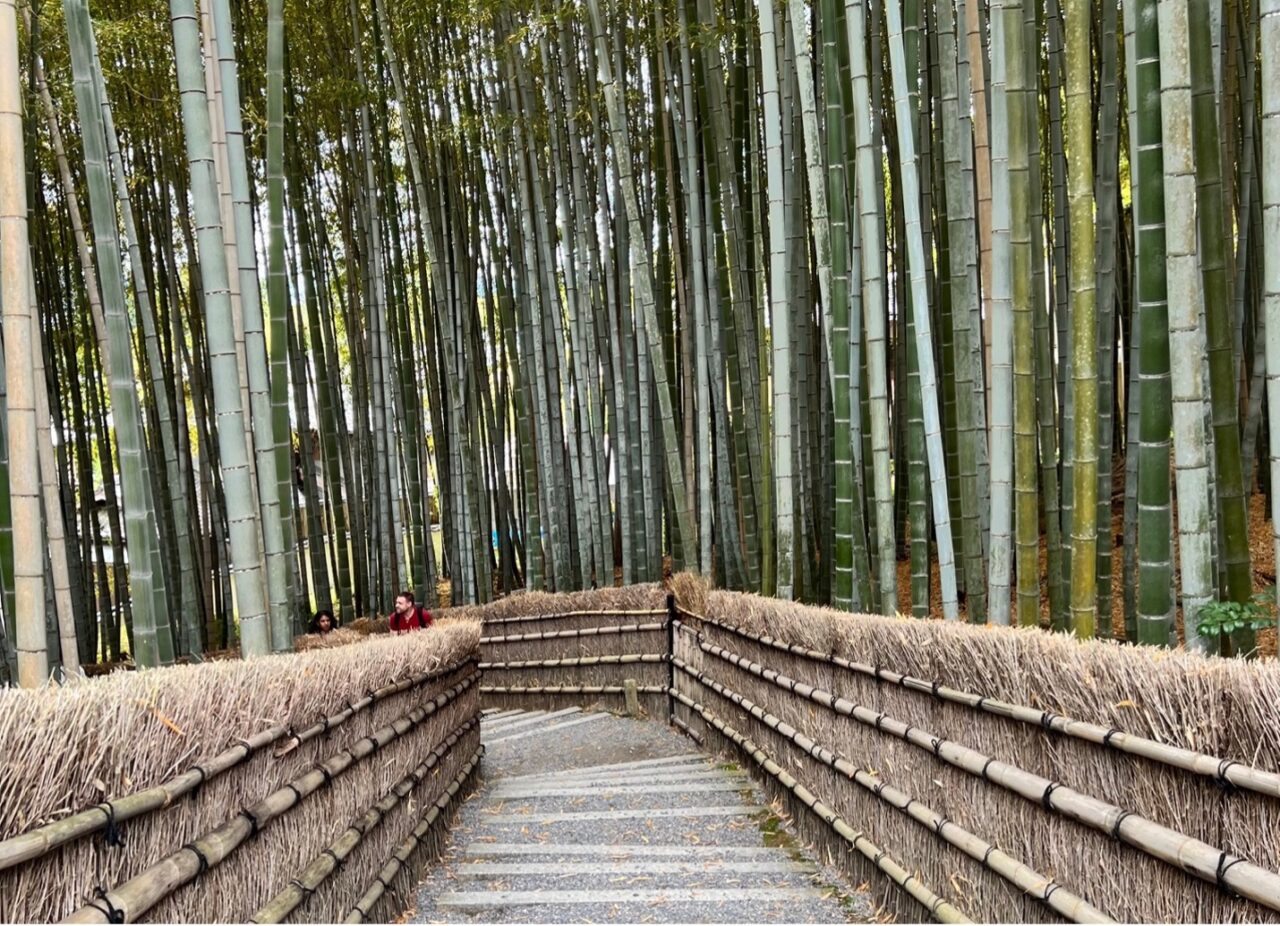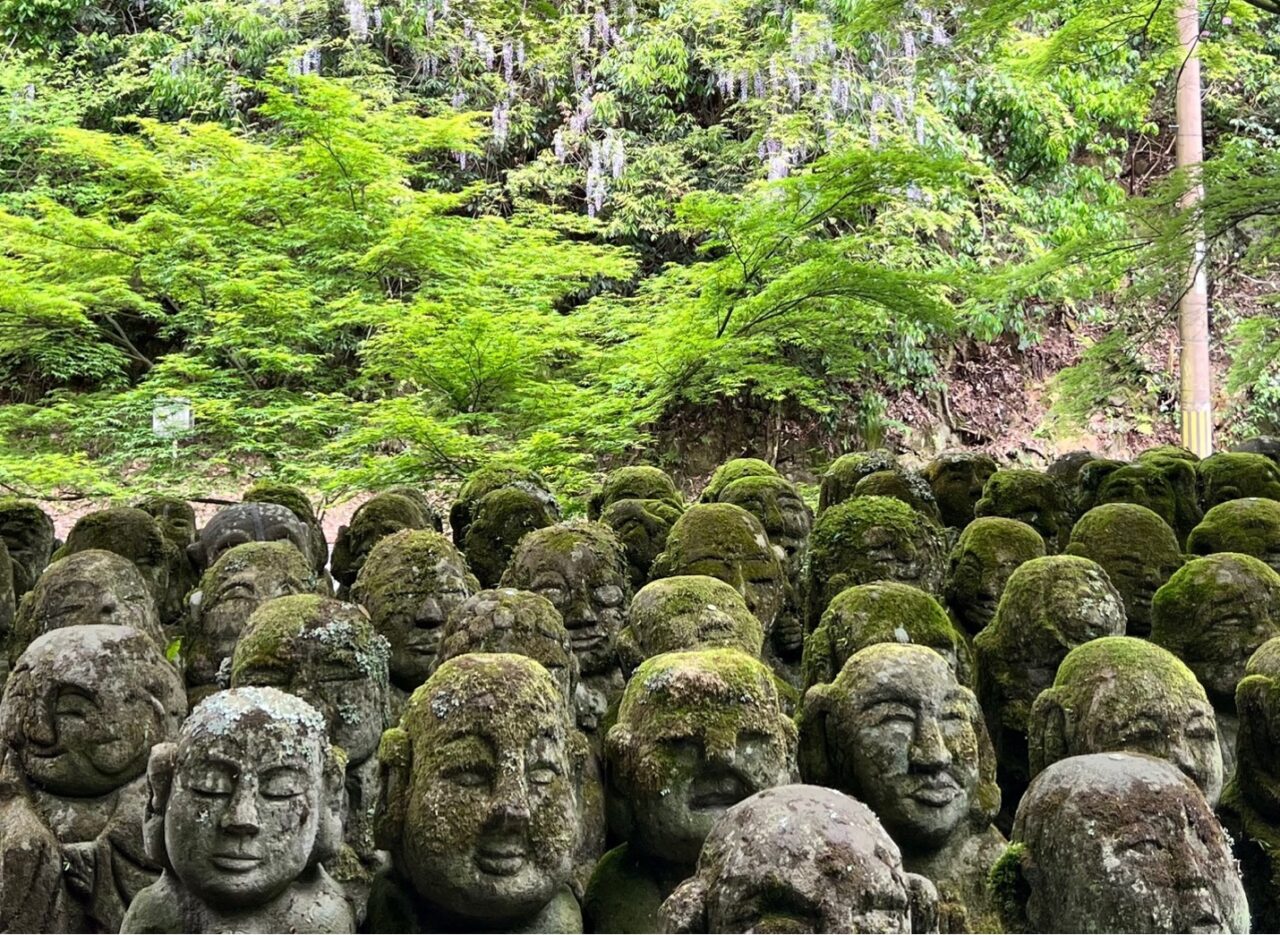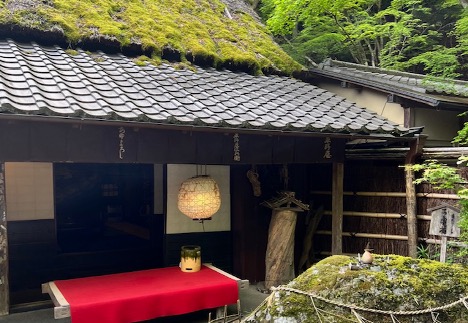Exploring Kyoto without the crowds: A quiet day trip to Saga Torii-moto Street


Written by
Name: Andra
Country of origin: Romania
How long you’ve lived in Japan: Fully in Japan since Feb 2023 (resident since Sept 2022)
Where you live in Japan: Tokyo
Instagram
Kyoto (京都) is a city full of charm, known for its historic temples, serene gardens, and picturesque streets. However, it’s no secret that Kyoto is also a popular destination for tourists from all over the world. Places like the Arashiyama (嵐山) Bamboo Grove and Fushimi Inari Shrine (伏見稲荷大社) often get crowded, especially during peak travel seasons like cherry blossom season in spring and autumn foliage season.
If you want to experience the beauty of Kyoto while avoiding the crowds, a day trip to Saga Torii-moto Street (嵯峨鳥居本) is a perfect choice. This historic street, nestled in the Saga-Arashiyama area, offers a peaceful escape with its traditional atmosphere, unique temples, and charming shops.
I personally visited during the Golden week (on a Saturday afternoon) which is one of the busiest periods in Japan and there were few to no people around.
In this blog post, I’ll take you through a relaxing itinerary for exploring Saga Torii-moto Street and its surroundings. You’ll learn about hidden temples, quiet gardens, and beautiful traditional tea houses that make this area one of Kyoto’s best-kept secrets.
Getting to Saga Torii-moto Street
Saga Torii-moto Street is located in the Saga-Arashiyama district, about 30 minutes from Kyoto Station. To get there, take the JR Sagano Line to Saga-Arashiyama Station. From the station, it’s about a 15-20 minute walk to the street. Alternatively, you can take a taxi to Otagi Nenbutsu-ji Temple (愛宕念仏寺), which is what I did and walked my way back to the famous Arashiyama bamboo forest.
The walk itself is part of the experience. You’ll pass through quiet residential neighborhoods and narrow paths lined with bamboo and small gardens. If you’re visiting during the spring or autumn, you’ll also see seasonal flowers or colorful leaves along the way.
For those who prefer not to walk, renting a bicycle is another great option. Cycling through the scenic area is a fun and easy way to get around.
Walking along Saga Torii-moto Street
Saga Torii-moto Street is a preserved historical street that feels like stepping back in time. The street is named after the torii (鳥居) gate (a traditional Japanese gate found at Shinto shrines) that marks its entrance. The buildings along the street are traditional wooden machiya (町家, townhouses), many of which are over a century old.
Unlike the bustling streets of central Kyoto, Saga Torii-moto is calm and uncrowded. As you walk along the street, you’ll find small shops selling handmade crafts, local snacks, and unique souvenirs. It’s a great place to take your time and explore at your own pace.
One of the highlights of Saga Torii-moto Street is its authentic atmosphere. The street isn’t overly commercialized, so you can experience a side of Kyoto that feels more local and genuine.
Stop 1: Adashino Nenbutsu-ji Temple
Your first stop should be Adashino Nenbutsu-ji (化野念仏寺), a tranquil temple with a rich history. The temple was founded in the Heian (平安) Period (794-1185) and is dedicated to the memory of those who have passed away without family to honor them.
The temple grounds are filled with over 8,000 stone statues, each representing a soul. These statues were collected from nearby cemeteries and placed here to honor the deceased. Walking among the statues feels peaceful and reflective.
Adashino Nenbutsu-ji is especially beautiful during the sento kuyo (千灯供養) ceremony in August, when the statues are illuminated with candles at night. However, even on an ordinary day, the temple’s quiet atmosphere and surrounding greenery make it a must-visit. Here is where you can experience walking through a bamboo forest identical to the famous Arashiyama forest, but without the crowds.

Best time to visit:
- Early morning: The soft morning light creates a serene atmosphere.
- Autumn: The colorful leaves add a magical touch to the temple grounds.
Stop 2: Otagi Nenbutsu-ji Temple
A short walk from Adashino Nenbutsu-ji is Otagi Nenbutsu-ji (愛宕念仏寺), one of the most unique temples in Kyoto. This temple is famous for its collection of 1,200 stone rakan (羅漢) statues. These statues represent disciples of the Buddha, and each one has a distinct expression and pose.
The statues were carved by local people and temple supporters in the 1980s, giving them a playful and human touch. Some statues are meditating, while others are laughing, playing instruments, or holding cups of tea. It’s fun to walk around and spot the different poses and expressions.
Because Otagi Nenbutsu-ji is off the beaten path, it’s rarely crowded. The quiet atmosphere and lush greenery make it a perfect place to enjoy nature and art in harmony.

Best time to visit:
- Late morning to early afternoon: The sunlight filtering through the trees adds to the temple’s beauty.
Enjoying local flavors
After exploring the temples, it’s time for lunch. The Saga-Arashiyama area is known for its Kyoto-style cuisine, which is simple, seasonal, and elegant. Here are a few recommendations:
- Yudofu (湯豆腐, Tofu Hot Pot): Kyoto is famous for its tofu, and yudofu is a must-try dish. This light and healthy hot pot is made with fresh tofu simmered in a delicate broth, often served with dipping sauces and side dishes.
- Soba (蕎麦) Noodles: Another local favorite is soba (buckwheat noodles), served either hot in a soup or cold with dipping sauce.
- Matcha (抹茶) Sweets: For dessert, try a cafe offering matcha (green tea) ice cream, matcha parfaits, or traditional Japanese sweets like warabimochi (soft jelly dusted with roasted soybean flour). I visited Ayuchaya Hiranoya teahouse (鮎茶屋 平野屋), located next to the torii gate, where I enjoyed a peaceful experience by myself. An experience I never thought I’d have in Kyoto.

Many of the restaurants in this area are small and family-run, adding to the charm of the experience.
Hidden gems in the area
After lunch, continue your exploration of the Saga Torii-moto area. There are several hidden gems that are worth visiting:
Gio-ji Temple
Gio-ji Temple (祇王寺) is a tiny but magical temple surrounded by a beautiful moss garden. The temple is dedicated to Gio, a dancer from the Heian Period who became a nun after a heartbreaking love story. Her story is featured in the classic Japanese epic, The Tale of the Heike (平家物語).
The moss garden is the highlight of Gio-ji. The soft, green moss covers the ground like a lush carpet, and the surrounding bamboo grove adds to the peaceful atmosphere. The garden is especially stunning in autumn when the leaves turn vibrant shades of red and orange.
This is a great place to sit quietly, enjoy the view, and reflect on life’s simple beauty.
Rakushisha Poet’s Hut
Another hidden gem is the Rakushisha Poet’s Hut (落柿舎), a rustic cottage that once belonged to Mukai Kyorai (向井去来), a disciple of the famous haiku poet Matsuo Basho (松尾芭蕉). The name “Rakushisha” means “the hut of falling persimmons,” inspired by an incident when a strong wind blew down all the persimmons in the garden.
The hut is surrounded by a simple garden and offers a glimpse into the quiet life of a poet. Inside, you can learn about haiku poetry and even try writing your own.
This spot is perfect for anyone who enjoys poetry, literature, or just a peaceful retreat from the modern world.
Shopping for Souvenirs
Before heading back, take some time to explore the small shops along Saga Torii-moto Street. Here, you’ll find unique and handmade items that make for great souvenirs or gifts.
Some of the things you can buy include:
- Pottery and ceramics: Look for beautifully crafted tea cups, bowls, and plates.
- Traditional sweets: Try yatsuhashi (八ツ橋), a cinnamon-flavored confection, or warabimochi (わらび餅), a soft jelly-like sweet.
- Handmade crafts: Many shops sell items like hand-dyed fabrics, wooden utensils, and small ornaments. I personally loved visiting the Adashino Mayumura (あだしのまゆ村) mayu dolls shop so I would highly recommend you to check it out.
Shopping in this area feels relaxed and personal, unlike the busy souvenir shops in central Kyoto.
Sunset at Daikaku-ji Temple
To end your day on a peaceful note, visit Daikaku-ji Temple (大覚寺), a large temple complex with a beautiful pond garden. This temple was once an imperial villa and has a long history dating back to the 9th century.
The highlight of Daikaku-ji is Osawa-no-ike Pond (大沢池), one of the oldest artificial ponds in Japan. The pond is surrounded by trees and offers stunning reflections of the sky and landscape.
Sunset is the best time to visit Daikaku-ji. As the sun sets, the light reflects off the pond, creating a magical scene. It’s a perfect way to end your day trip to Saga Torii-moto Street.
Why visit Saga Torii-moto Street?
Saga Torii-moto Street is an ideal destination for travelers who want to experience Kyoto’s charm without the hustle and bustle of crowded tourist spots. The area’s historic temples, scenic streets, and quiet atmosphere make it a perfect place to slow down and enjoy the beauty of Kyoto at your own pace.
Tips for Visiting
- Arrive early: The area is peaceful all day, but mornings are especially quiet and beautiful.
- Wear comfortable shoes: You’ll be walking a lot on uneven paths and stairs.
- Bring cash: Many small shops and restaurants don’t accept credit cards.
- Check the seasons: Each season offers a unique charm, from cherry blossoms in spring to colorful leaves in autumn.
Conclusion
A visit to Saga Torii-moto Street is like discovering a secret side of Kyoto. It’s a place where history, nature, and art come together in perfect harmony. Whether you’re walking among the stone statues at Adashino Nenbutsu-ji, smiling at the quirky figures at Otagi Nenbutsu-ji, or relaxing by the moss garden at Gio-ji, this hidden gem offers a memorable and peaceful experience.
If you’re looking for a way to explore Kyoto without the crowds, Saga Torii-moto Street is the perfect destination. So, pack your walking shoes, bring your curiosity, and get ready to discover the quieter side of Kyoto!
